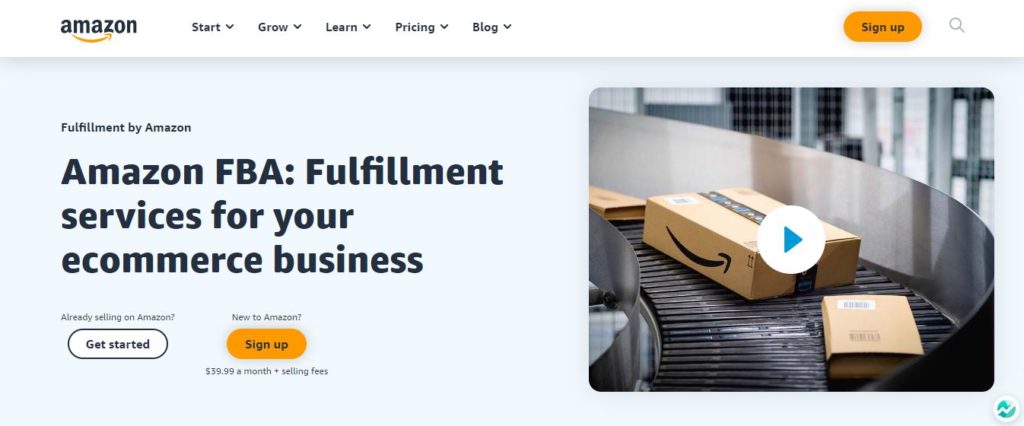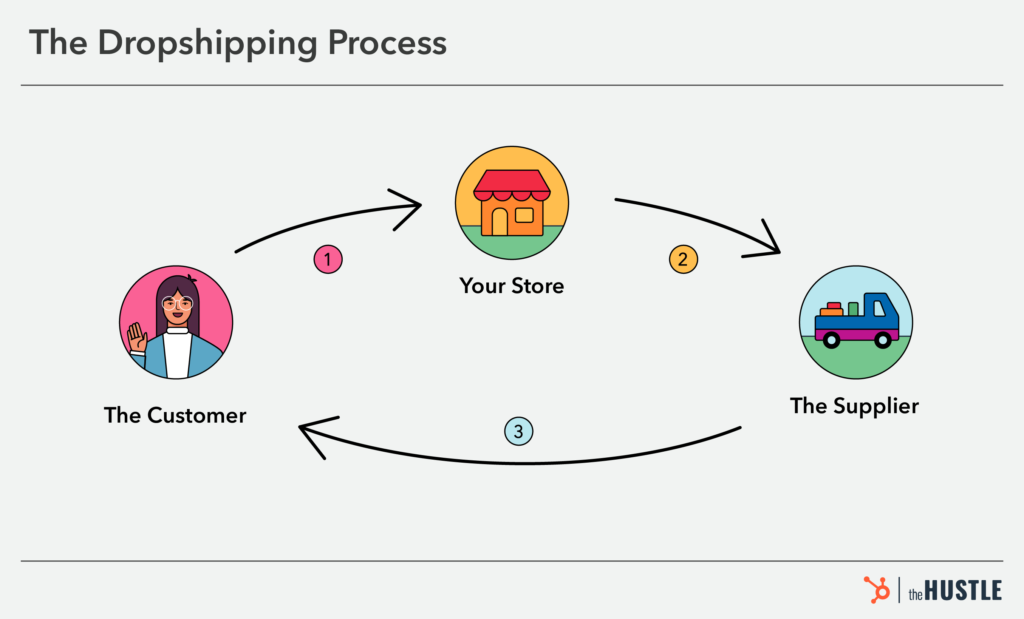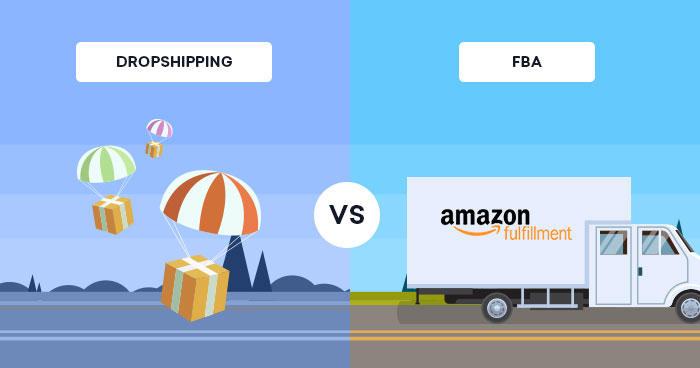
In the ever-evolving e-commerce landscape, two popular business models have emerged as dominant players: Amazon FBA (Fulfillment by Amazon) and Dropshipping. Both of these models offer entrepreneurs opportunities to enter the lucrative world of online retail without the traditional hassles of maintaining physical inventory.
However, it’s essential to assess which of these business models best suits your goals, resources, and market conditions. This article will delve into the Amazon FBA vs. Dropshipping debate to help you make an informed decision.
Understanding Amazon FBA
Amazon FBA stands for Fulfillment by Amazon. The business model allows sellers to store their products in Amazon’s fulfillment centers. When a customer places an order, Amazon picks, packs, and ships the product on behalf of the seller. Additionally, Amazon handles customer service and returns. This model offers several advantages:
1. Prime Eligibility
Amazon FBA products are eligible for Amazon Prime, which can significantly boost sales since Prime members tend to shop more frequently and are more likely to make purchases.
2. Trust and Credibility
Products fulfilled by Amazon often carry more credibility in the eyes of consumers, as they trust Amazon’s reputation for reliable shipping and customer service.
3. Access to Amazon’s Customer Base
With Amazon FBA, you gain access to Amazon’s vast customer base. This can be especially beneficial for new sellers looking to tap into a broad market.
4. Hands-off Fulfillment
Amazon takes care of storage, packaging, shipping, and even returns, allowing you to focus on other aspects of your business, such as marketing and product development.
5. Global Reach
Amazon has a global presence, which means your products can reach international customers without significant logistical challenges.
However, it’s not all smooth sailing with Amazon FBA. There are some drawbacks to consider:
1. Fulfillment Fees
Using Amazon’s fulfillment services incurs fees, including storage, pick-and-pack, and shipping fees. These costs can eat into your profit margins.
2. Competition
The Amazon marketplace is highly competitive. You’ll need to stand out among millions of other sellers to succeed.
3. Limited Control
When you store your inventory in Amazon’s fulfillment centers, you have less control over the storage and shipping process, leading to issues like the commingling of inventory.
Also Read – Three things to keep in mind when selecting an FBA Freight Forwarder
The World of Dropshipping

Image Source: https://blog.hubspot.com/the-hustle/start-dropshipping
Dropshipping, on the other hand, is a business model where you sell products to customers without ever physically holding the inventory. Instead, you purchase products from suppliers only when you make a sale. Here are some key aspects of dropshipping:
1. Low Startup Costs
Dropshipping requires minimal upfront investment compared to traditional retail or Amazon FBA since you don’t need to purchase and store inventory.
2. Flexibility
You have more control over your product selection, as you can easily add or remove items from your online store without the constraints of physical inventory.
3. Location Independence
Dropshipping allows you to run your business from anywhere with an internet connection, making it an attractive option for digital nomads and those seeking a location-independent lifestyle.
4. Variety of Products
With dropshipping, you can offer a wide range of products from different suppliers, providing variety to your customers.
5. Higher Profit Margins
Dropshipping can offer higher profit margins on individual sales since you don’t have the overhead costs of warehousing and fulfillment.
However, dropshipping isn’t without its challenges:
1. Supplier Reliability
Your business relies on the reliability and quality of your suppliers. Any shipping times or product quality issues can negatively impact your customer satisfaction.
2. Lower Control
You have less control over the fulfillment process, so you may encounter problems like delayed shipments or items going out of stock.
3. Branding and Credibility
Building a brand presence and credibility can be more challenging in dropshipping, as customers may be skeptical of businesses that don’t hold inventory.
Amazon FBA vs. Dropshipping: The Comparison
Image Source : https://www.cloudways.com/
Now that we’ve explored the key features of both Amazon FBA and dropshipping, let’s compare them across various factors to determine which might be better for you.
1. Initial Investment
- Amazon FBA: Requires a significant initial investment in inventory, storage fees, and fulfillment costs.
- Dropshipping: Requires minimal upfront investment, making it a more accessible option for those with limited capital.
2. Scalability
- Amazon FBA: Can be highly scalable, but you’ll need to invest in inventory to grow.
- Dropshipping: Offers more flexibility in adding or removing products, allowing for quicker scalability.
3. Profit Margins
- Amazon FBA: Profit margins can be lower due to fulfillment fees and increased competition.
- Dropshipping: Generally offers higher profit margins on individual sales.
4. Control
- Amazon FBA: You have less control over the fulfillment process and storage of your products.
- Dropshipping: Offers more control over product selection but less control over fulfillment and product quality.
5. Marketplace
- Amazon FBA: Provides access to Amazon’s vast customer base, which can be a significant advantage.
- Dropshipping: Allows you to sell on various platforms, offering more diversification but potentially less exposure.
6. Branding
- Amazon FBA: Can be challenging to build a distinct brand presence on the Amazon platform.
- Dropshipping: Offers more opportunities for brand development and customization.
7. Customer Service
- Amazon FBA: Amazon handles customer service and returns, reducing your workload.
- Dropshipping: You’re responsible for handling customer inquiries and returns, which can be time-consuming.
8. Risk
- Amazon FBA: Risk is associated with holding inventory, which can become obsolete or slow-moving.
- Dropshipping: Risk is lower as you only purchase products when you make a sale.
9. Long-Term Viability
- Amazon FBA: The FBA model is well-established and trusted but may require adapting to changing Amazon policies.
- Dropshipping: Long-term viability depends on your suppliers’ quality and ability to adapt to market trends.
FREQUENTLY ASKED QUESTIONS
1: Is dropshipping less competitive than Amazon FBA in 2023?
Dropshipping can offer more flexibility and lower upfront costs, making it accessible to newcomers. However, competition exists in both models, and success depends on factors like niche selection, marketing strategies, and product quality.
2: Which model has a higher profit potential?
Dropshipping often provides higher profit margins on individual sales since you don’t have inventory holding costs. Amazon FBA, while competitive, may yield lower margins due to fulfillment fees.
3: Do I need prior experience to start with Amazon FBA or Dropshipping?
No prior experience is required for either model. Newcomers can start both, but gaining knowledge through research and learning from industry experts is highly recommended.
4: Can I combine both Amazon FBA and Dropshipping in my business?
Yes, some sellers choose a hybrid approach, using Amazon FBA for certain products and dropshipping for others. However, managing both models can be complex and requires careful planning.
5: Are there any hidden costs associated with Amazon FBA or Dropshipping?
Both models have associated costs, such as Amazon FBA’s fulfillment fees or the expenses of maintaining an e-commerce platform for dropshipping. It’s crucial to factor in all costs when calculating profitability.
Conclusion
In the Amazon FBA vs. Dropshipping debate of 2023, your choice hinges on financial resources, goals, and risk tolerance. Opt for Amazon FBA if you possess a substantial inventory investment, seek access to Amazon’s customer base, and are prepared for intense competition.
Alternatively, choose Dropshipping with minimal upfront costs, craving flexibility in product selection, and a willingness to build your brand.
Remember, both paths can lead to success, but your commitment to factors like marketing, customer service, and product choice will be critical in the ever-changing landscape of e-commerce in 2023 and beyond.

